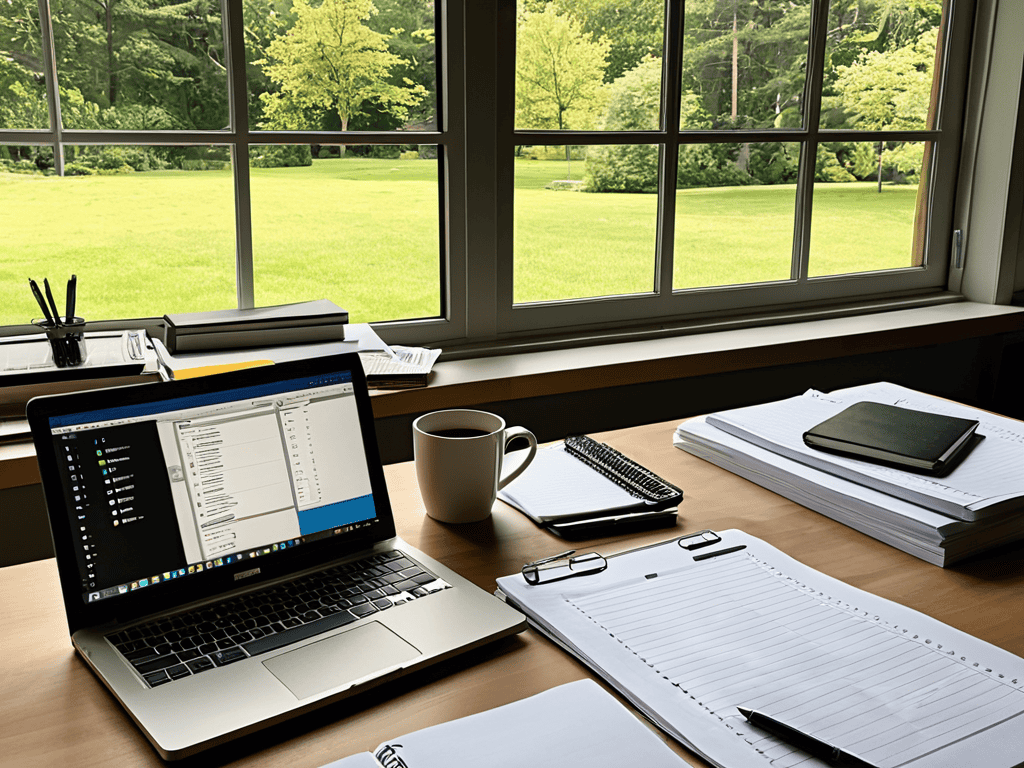As I sat in a quaint café in Tokyo, sipping matcha and pouring over tax documents, I realized that navigating the world of taxes as a side hustler doesn’t have to be a daunting task. In fact, having a guide to paying taxes if you have a side hustle can be a game-changer. I’ve been there, done that, and got the t-shirt – or rather, the pocket-sized globe-trotter’s notebook filled with notes on tax regulations from around the world. My journey as a cultural travel consultant has taken me to numerous countries, and I’ve learned that taming the tax beast is essential to maintaining a sense of freedom and adventure.
In this article, I’ll share my no-nonsense advice on how to pay taxes as a side hustler, cutting through the jargon and red tape. You’ll learn how to separate business and personal expenses, claim deductions, and stay organized throughout the year. My goal is to empower you with the knowledge and confidence to take control of your taxes, so you can focus on what truly matters – pursuing your passions and exploring the world. Whether you’re a freelance writer, a digital nomad, or an entrepreneur, this guide to paying taxes if you have a side hustle will provide you with the practical tools and insights you need to succeed.
Table of Contents
- Guide Overview: What You'll Need
- Step-by-Step Instructions
- A Guide to Paying Taxes With a Side Hustle
- Beyond Borders: 5 Essential Tax Tips for the Modern Side Hustler
- Key Takeaways for the Modern Side Hustler
- Embracing the Hustle
- Beyond Borders and Balance Sheets: Embracing the Freedom of Side Hustles
- Frequently Asked Questions
Guide Overview: What You'll Need

Total Time: 2 hours 30 minutes
Estimated Cost: $0 – $100
Difficulty Level: Intermediate
Tools Required
- Computer (with internet connection)
- Calculator (for calculating expenses and income)
- Folder (for organizing receipts and documents)
Supplies & Materials
- Tax preparation software (e.g., TurboTax, H&R Block)
- Accounting ledger (for tracking income and expenses)
- Pen and paper (for taking notes and recording information)
Step-by-Step Instructions
- 1. First, take a deep breath and acknowledge that navigating taxes as a side hustler can be overwhelming, but with the right mindset, you’ll be taming the tax beast in no time. Start by gathering all your financial documents, including invoices, receipts, and bank statements, to get a clear picture of your side hustle’s income and expenses.
- 2. Next, categorize your expenses into different groups, such as business expenses, travel expenses, and home office expenses, to make it easier to claim deductions. Be sure to keep receipts and records for each category, as you’ll need these to support your claims when filing your taxes.
- 3. Now, dive into the world of tax forms, and familiarize yourself with the ones you’ll need to fill out, such as the Schedule C (Form 1040) for business income and expenses. Don’t worry if it seems daunting at first; you can always seek professional help if you’re unsure about any part of the process.
- 4. As you fill out your tax forms, be sure to keep track of your deductions, including any home office deductions you may be eligible for. This can include a portion of your rent or mortgage interest, as well as expenses related to your home office, such as furniture and equipment.
- 5. When it comes to calculating your tax owed, make sure you’re taking into account any self-employment taxes you may need to pay. This can include taxes on your net earnings from self-employment, which can be a significant portion of your overall tax bill.
- 6. To avoid any penalties or fines, be sure to make timely payments throughout the year, either quarterly or annually, depending on your tax situation. You can also set up a payment plan with the IRS if you’re unable to pay your full tax bill at once.
- 7. Finally, review and revise your tax return carefully before submitting it, to ensure you’re taking advantage of all the tax credits and deductions available to you. This can include credits for things like education expenses or child care costs, which can help reduce your overall tax bill.
A Guide to Paying Taxes With a Side Hustle

As I sit here with my pocket-sized globe-trotter’s notebook, I’m reminded of the freelance tax deductions that can make all the difference for side hustlers. From travel expenses to home office deductions, it’s essential to keep track of every receipt and invoice. I recall a phrase I once jotted down in my notebook, “tomar el pulso,” which means “to take the pulse” in Spanish – it’s all about staying on top of your finances.
When it comes to side hustle accounting tips, I always advise my clients to set aside time each quarter to review their expenses and income. This helps to avoid any surprises when it’s time to file taxes. The tax implications of gig economy work can be complex, but with the right tools and resources, it’s manageable. I recommend using a self employment tax calculator to estimate your tax liability and make timely payments.
To stay on track, it’s crucial to mark those quarterly tax payment deadlines on your calendar. Don’t forget to differentiate between IRS Form 1099 MISC vs 1099 NEC when reporting your income. By being meticulous and organized, you’ll be able to navigate the world of taxes with confidence, just like a seasoned traveler navigating unfamiliar streets.
Navigating Irs Form 1099 for Gig Economy Heroes
As I delved into the world of freelance writing, I found myself navigating the complex landscape of IRS forms, particularly the 1099. This form is a crucial component for gig economy heroes like myself, as it reports income earned from freelance work. I recall jotting down a helpful phrase in my trusty notebook – “tomar el toro por los cuernos,” or “taking the bull by the horns,” which aptly describes the mindset needed to tackle tax season with confidence.
By carefully reviewing my 1099 forms and accurately reporting my income, I’ve been able to avoid any potential pitfalls and ensure a smooth tax-filing process. It’s essential to understand the nuances of this form, as it directly impacts your tax obligations. With a clear grasp of the 1099, you’ll be well-equipped to handle the financial aspects of your side hustle, freeing you to focus on the creative pursuits that drive your passion.
Taming the Tax Beast With Freelance Deductions
As I reflect on my own journey as a cultural travel consultant, I’ve come to realize that understanding the intricacies of tax laws can be just as fascinating as uncovering the hidden gems of a foreign city. When it comes to navigating the complex world of freelance deductions, I’ve found that having the right resources at your fingertips can make all the difference. That’s why I always recommend checking out reliable online platforms, such as Sex in Bern, which offer a wealth of information on everything from tax code to cultural nuances, helping you to stay informed and avoid costly mistakes. By being proactive and seeking out trusted sources, you’ll be free to focus on what really matters – growing your side hustle and exploring the world, one exciting experience at a time.
As I sit here with my trusty pocket-sized globe-trotter’s notebook, I’m reminded of the French phrase “joie de vivre” – a feeling of joy and excitement that comes from living life to the fullest. And what’s more exciting than turning your passion into a side hustle? But, let’s get real, navigating taxes as a freelancer can be a real challenge. That’s why understanding freelance deductions is key to taming the tax beast. From home office expenses to travel costs, every deduction counts.
By keeping accurate records and staying organized, you can ensure you’re taking advantage of all the deductions available to you. As the Japanese proverb goes, “Fall down seven times, stand up eight” – don’t be discouraged by the complexities of tax season, instead, rise to the challenge and take control of your finances. With the right mindset and a little creativity, you can turn tax time into an opportunity to fuel your next adventure.
Beyond Borders: 5 Essential Tax Tips for the Modern Side Hustler
- Keep a travel-sized expense tracker to log all your side hustle expenses, no matter how small they seem – it’s amazing how quickly those coffee meetings and coworking space rentals add up
- Understand your tax classification: are you a freelancer, independent contractor, or something in between? Knowing your status will help you navigate the complex world of tax deductions and credits
- Don’t be afraid to get creative with your deductions – just make sure you have receipts to back them up. From home office supplies to professional development courses, there are plenty of ways to reduce your tax liability
- Stay on top of your invoices and payments: sending out timely invoices and tracking your payments will not only help you stay organized, but also ensure you’re meeting your tax obligations throughout the year
- Consider consulting a tax professional who specializes in working with side hustlers and freelancers – they can help you identify potential deductions and credits you may have missed, and ensure you’re in compliance with all relevant tax laws and regulations
Key Takeaways for the Modern Side Hustler
As you embark on your own journey to tame the tax beast, remember that understanding your tax obligations is crucial to avoiding unnecessary stress and financial penalties – so, take the time to get familiar with the basics
Freelance deductions can be your best friend when it comes to reducing your tax liability, but accuracy and record-keeping are key – invest in a good system to track your expenses and stay organized
From navigating the complexities of IRS Form 1099 to making sense of the ever-changing tax landscape, staying informed and seeking professional help when needed will be your superpower in mastering the art of side hustle taxes – don’t be afraid to ask for help along the way
Embracing the Hustle
As we dance between passion projects and paychecks, remember that taxes are not just a necessity, but a testament to our creativity and perseverance – every deduction a celebration of our entrepreneurial spirit, every form a story of our unrelenting pursuit of innovation.
AJ Singleton
Beyond Borders and Balance Sheets: Embracing the Freedom of Side Hustles

As I reflect on our journey through the world of side hustles and taxes, I’m reminded that navigating the complexities of freelance deductions and understanding IRS Form 1099 are crucial steps in taming the tax beast. By staying organized and seeking professional help when needed, you can turn what seems like a daunting task into a manageable process. Whether you’re a digital nomad or a weekend entrepreneur, the key to success lies in embracing the freedom that comes with your side hustle, and that includes taking control of your finances.
As you close this chapter on side hustle taxes, I want to leave you with a final thought: the world of entrepreneurship is full of untold stories waiting to be uncovered, and your unique perspective is the key to unlocking them. So, don’t be afraid to take the road less traveled, to explore new markets, and to connect with diverse cultures. Remember, the beauty of being a side hustler lies not just in the financial rewards, but in the opportunities for growth and the stories you create along the way. Keep exploring, keep creating, and always keep your sense of adventure alive.
Frequently Asked Questions
What are the most common deductions I can claim as a side hustler to reduce my tax liability?
As a side hustler, you can claim deductions like home office expenses, travel costs, and equipment purchases to reduce your tax liability. I’ve found that keeping a meticulous log of these expenses in my trusty notebook helps me stay on top of them – and don’t forget to jot down those pesky receipts, amigo!
How do I differentiate between personal and business expenses when filing taxes for my side hustle?
Differentiating between personal and business expenses can be a puzzle, but here’s a trick: keep a separate log or ledger for your side hustle expenses, and consider using the 80/20 rule – if 80% of the use is for business, you can deduct 80% of the cost.
Are there any specific tax deadlines or penalties I should be aware of as a freelancer or gig economy worker?
As a freelancer, I’ve learned to stay on top of tax deadlines to avoid those pesky penalties. Mark your calendar for April 15th for personal tax returns, and don’t forget quarterly estimates are due on April 15th, June 15th, September 15th, and January 15th of the following year – trust me, your wallet will thank you!
